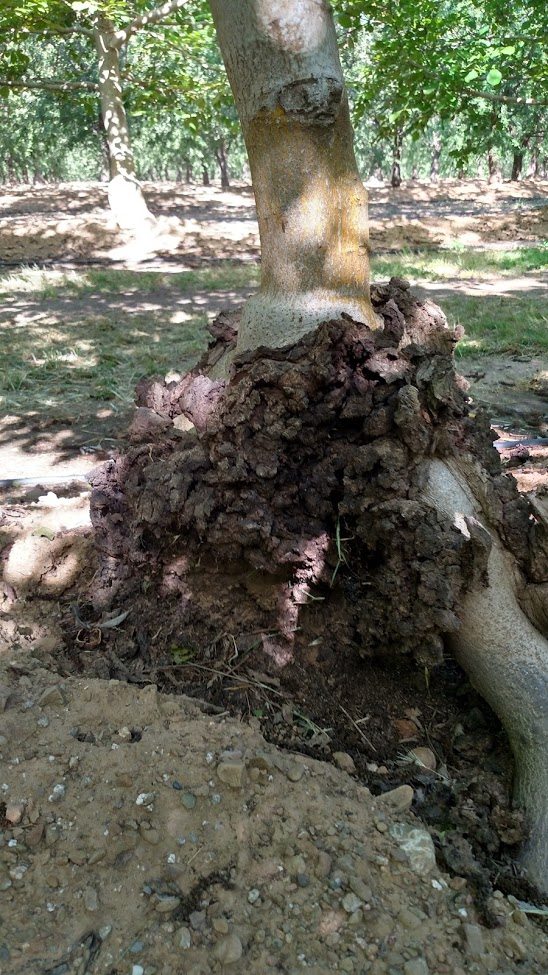Walnut growers have expressed significant interest in methods for treating crown gall infections in orchards this year. When there are only a few trees that are infected, growers can find success in treating crown gall through pneumatic excavation.
 “If you’ve got a vast majority of your trees infected with this it’s not a technique you’re going to want to use because it’s very labor intensive,” said Dani Lightle, Cooperative Extension Orchard Systems Advisor for Glenn County.
“If you’ve got a vast majority of your trees infected with this it’s not a technique you’re going to want to use because it’s very labor intensive,” said Dani Lightle, Cooperative Extension Orchard Systems Advisor for Glenn County.
The first step of treatment involves removing the soil around the base of the tree to expose the galls. Using shovels for this process is acceptable, but a more efficient means of removing soil involves the use of an air compressor and a specifically designed nozzle.
With the soil removed, the next step is removing the now exposed gall along with the bark tissue that surrounds it using a hatchet and chisel. A propane torch is then used to burn and sterilize the entire margin of the crown gall. “You need the heat there to kill that bacteria and also to help maybe start the callusing process on that tree,” Lightle said.
Once the gall tissue has been effectively dried and sterilized, the treatment area will need to remain exposed for six months. “Remember, you just cut a giant injury in that tree, if you cover it back over again with soil, you’ve just reinfected it,” noted Lightle.
The rootstock used by the majority of walnut growers in California is extremely susceptible to the crown gall pathogen, which is a common soil-borne bacterium. Treating crown gall is most effective during the growing season as the bark surrounding the gall can easily be removed and the affected areas can heal more rapidly. Read a detailed article about the process here.
Listen to the interview below.
Dani Lightle










